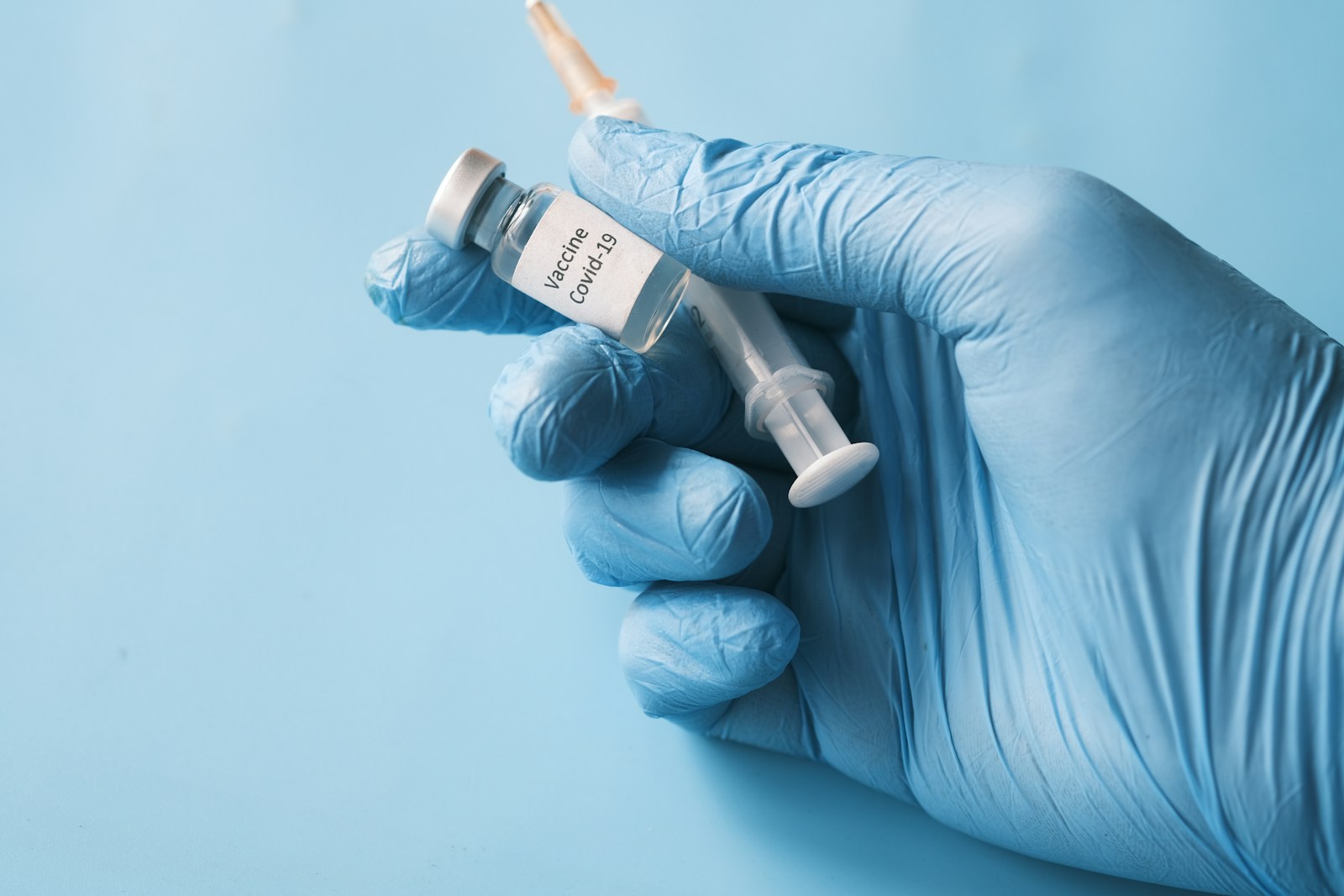Health & Society
Why does a glass of red wine cause a headache?

A glass of red wine causes a headache, which can be caused by a variety of factors, one of the main culprits being histamines. Histamines are natural compounds found in wine, and red wine, in particular, has higher levels than white wine. When consumed, histamines can cause allergic reactions in some people, leading to symptoms such as headaches.
Red wine gets its rich color and strong aroma from the grape skins that are in contact with the grape juice during the fermentation process. This prolonged contact results in a higher concentration of compounds, including histamines. Histamines are also found in grape skins and can be released during grape crushing and fermentation. In people sensitive to histamines, the body’s reaction to these compounds may include headaches.
In addition, red wine contains another substance known as tyramine. Tyramine is a naturally occurring amino acid that can cause blood vessels to constrict and then dilate, which can lead to headaches. Some people are more susceptible to the effects of tyramine and for them consumption of red wine can cause headaches. Another contributing factor to red wine headaches is the presence of sulfites. Sulfites are compounds commonly used as preservatives in wine. Although they occur naturally to some extent, winemakers often add additional sulfites to preserve wine freshness and prevent spoilage. Some people are sensitive to sulfites, and this sensitivity can manifest as headaches or migraines. Additionally, the alcohol content of red wine may also play a role in causing headaches. Alcohol is a diuretic, meaning it increases urine production, leading to dehydration. Dehydration can contribute to headaches, and when combined with other factors such as histamines and tyramine, it can increase the likelihood of a wine-induced headache.
It is important to note that individual reactions to red wine may vary. Factors such as genetics, general health, and personal sensitivities play a significant role in determining how someone reacts to the compounds found in red wine. For those who consistently experience headaches after consuming red wine, it may be beneficial to explore alternatives that are lower in histamine and sulfites or consult a health professional to determine specific triggers and find ways to alleviation of symptoms. Additionally, staying hydrated and drinking wine in moderation can help minimize the risk of headaches associated with red wine consumption.
Photo by Pixabay: https://www.pexels.com/photo/wine-tank-room-434311/
Health & Society
ASTRAZENECA confirms in England that its vaccine can produce thrombi

The company AstraZeneca confirms in official documents that its vaccine against COVID-19 can cause side effects such as thrombosis. And it has done so due to the publication in The Telegraph newspaper of a series of data on a class action lawsuit filed in the English High Court for 51 cases of people who have died or suffered serious injuries.
La empresa se expone a una indemnización cercana a los 100 millones de libras. Al parecer, su vacuna “Vaxzevria, desarrollada con la Universidad de Oxford, causó la muerte y lesiones graves en decenas de casos. Los abogados argumentan que la vacuna produjo un efecto secundario que ha tenido efectos devastadores en un pequeño número de familias, informa el diario británico.” (1)
As early as 2021, the European Medicines Agency detected some cases of thrombosis with thrombocytopenia, also linked to Pfizer and Moderna vaccines. However, considering them so insignificant at that time, it decided not to investigate. Such cases did not generate concern then, nor do they do so now. They are considered collateral damage. Deaths or people with visible damage due to vaccines are diluted in the figures of those vaccinated and are insignificant for the organizations that have to monitor these companies.
How much money did the pharmaceutical companies make from the COVID-19 vaccine?
In an article from August 2021, almost three years ago, official figures were given on how much profit the COVID-19 business had brought in for pharmaceutical companies: “The international pharmaceutical majors involved in the production of the covid-19 vaccine collectively earned more than €24.5 billion in the first half of 2021, driven by growing demand for the drug. Pharmaceuticals Pfizer, AstraZeneca, Moderna and Johnson & Johnson made a net profit of €24.522 billion in this period, an increase of 66% over 2020.” (2)
From January to June 2021 Pfizer posted a profit of $10.44 billion, up 56% from the previous year (2020). AstraZeneca reported a net profit in the first six months of 2021 of $2.696 billion, up 51.7% from the previous year. Moderna, in the same time period reported earnings of $4,001 million, achieving the first net profit in its history. Finally, Johnson and Johnson reported a net profit of 12,475 million dollars, 32.4% more than in the first half of the previous year.
If we add to all the above millions that we are only referring to one period of the pandemic, imagine the amount of money they have moved since then, and especially if we take into account that the vaccine against Covid-19 has practically become chronic, just like the flu vaccine.
The fact that now the international criminal courts are forcing them to pay some small amounts does not mean any reduction in their treasury coffers. The big pharmaceutical companies, with the help of the media and above all of the states, have forced us to buy, through FEAR, a vital necessity: to be vaccinated so as not to be pointed out as a danger to society, as it happened in those years, where even the security forces of the states were put to the task of arresting and fining those who, exercising their rights, refused to be vaccinated.
Today it is AstraZeneca who is paying, hopefully others will follow in other countries and then class action lawsuits will follow against governments and politicians. Who will pay us citizens back for the time stolen?
1.- AstraZeneca admite que su vacuna contra el Covid-19 puede provocar efectos secundarios como la trombosis (msn.com)
2.- ¿Cuánto dinero ganan las farmacéuticas gracias a las vacunas del covid? (atlantico.net)
Health & Society
4 reasons why red wine is no longer healthy

Scientists and doctors have considered red wine to be healthy for years. A study linked moderate alcohol consumption – defined as one drink or less per day for women and two or less per day for men – to a 30-40% lower death rate from heart disease in drinkers compared to non-drinkers, Forbes reports.
Red wine has become healthy because it contains not only alcohol, but also the health-enhancing antioxidants from the grape skins. One powerful antioxidant is resveratrol, which repairs damaged blood vessels, prevents blood clots and reduces inflammation. This has led experts to recommend red wine in moderation for health benefits. Wine sales have grown tremendously since the 1990s.
Now we think differently. Moderate drinkers live longer on average, but not because they drink alcohol. This is because they tend to be healthier – more active, more educated, eat better food. Early research led us to believe that moderate consumption was healthy. But here are four reasons why you shouldn’t think of red wine as healthy, even if you drink less than a glass a day.
1. Moderate alcohol consumption is associated with worse, not better, cardiovascular health A 2022 study in JAMA Network Open looked at 371,463 people in the UK and found that moderate drinking was associated with 1.3 times higher risk of high blood pressure and 1.4 times higher risk of coronary heart disease. The study took into account a person’s genetic predisposition to alcohol use, which helped overcome some limitations of earlier research.
2. Alcohol Use Increases Cancer Risk Even with Moderate Drinking Alcohol is a known carcinogen, accounting for 6% of all cancers and 4% of cancer deaths, accounting for 75,000 cancer cases and 19,000 deaths annually in the US. Alcohol increases oxidative stress and the metabolic products of alcohol, namely acetaldehyde, damage liver DNA. It also directly damages the DNA of mouth and throat cells, significantly increasing the risk of breast cancer even with moderate consumption. Women who drink three alcoholic drinks a week have a 15% higher risk of breast cancer than those who don’t drink at all.
3. Sleep quality is worsened by alcohol Alcohol is a sedative. It helps you fall asleep faster. But this negatively affects the quality of your sleep. This is often noticeable even after a few drinks. A study of 4,098 Finns found that alcohol increased stress responses and impaired recovery during the first three hours of sleep. Along with hangovers, poor sleep makes you less alert the next day.
4. It Will Take a Deadly Amount of Red Wine to Benefit from Its Antioxidants Red wine contains resveratrol. But it doesn’t contain enough of it to significantly affect your health. A study measured how much resveratrol is absorbed into the body from a glass of alcohol, as well as two other polyphenols (catechin and quercetin) that have positive effects on health. Blood concentrations of all three were found to be too low to be beneficial. To get high enough, you need to drink a large amount – gallons, in fact.
Photo by Ion Ceban @ionelceban: https://www.pexels.com/photo/close-up-photo-of-brown-labeled-bottles-2580989/
Health & Society
Scientology’s Stand for Human Rights: A Look at the Budapest Protest Against Psychiatry

Press release. In Budapest, the Citizens Commission on Human Rights (CCHR) staged a protest during the European Psychiatric Association Congress, criticizing harmful psychiatric practices. The event featured a march and an exhibition, highlighting the need for substantial reforms in the mental health industry, as requested by United Nations and the World Health Organization.
A protest took place in Budapest challenging practices within the field of psychiatry during the European Psychiatric Association Congress. The Citizens Commission on Human Rights (CCHR) organized this demonstration to shed light on what they view as abusive or harmful methods in psychiatry. The event included a march and an exhibition aiming to bring attention to issues within the mental health industry and advocate for significant reforms.

The EPA Congress, held in April 2024 faced criticism for not taking action in response to recent directives from international bodies such as the UN and the World Health Organization. These directives called for an end to abusive psychiatric approaches, a matter that critics felt was not adequately addressed by the EPA’s theme of “Mental Health: Open and Inclusive.”
Led by CCHR Hungary, the protest began with a march through Budapest’s city center that concluded at the Budapest Congress and Exhibition Center, where the EPA Congress was being held. The march remained peaceful yet impactful, underscoring the protesters calls for reforms in practices.
After the march, CCHR Hungary presented an exhibit titled “Psychiatry; An Industry of Death.” This display, showcased in cities across the United States and Europe, utilizes records, videos and other types of evidence gathered over a span of more than five decades to scrutinize the field of psychiatry. The exhibit reveals the repercussions of psychiatric methods, including contentious treatments like brain operations and “electroconvulsive therapy” and how they have influenced various aspects of society including prominent artists and historical events.
During the exhibit’s unveiling, János Dobos, the head of CCHR Hungary, spoke fervently. “This material underscores the impact of psychiatry and the often harmful effects it has on individuals and society as a whole” stated Dobos. “It is essential for us to question these practices and advocate for treatment alternatives.”
Known for its intense content, the exhibition cautions visitors about its nature and allows entry to individuals only above 16 years old, unless accompanied by an adult. Its goal is to inform the public about events and current challenges in psychiatry while promoting a reassessment of how mental health issues are addressed and treated.

CCHR, the mental health watchdog organization founded in 1969 by psychiatrist Thomas Szasz in collaboration with the Church of Scientology, has consistently sparked attention and support due to its critical yet accurate perspective on psychiatry and its methods.
Recent incidents in Budapest have triggered a discussion on the involvement of psychiatry, in contemporary healthcare and the moral consequences of its methods. As discussions progress CCHR aims to persist in supporting what they see as changes to safeguard individuals rights and enhance mental health services globally.
Members of the Church of Scientology, the religion founded by L. Ron Hubbard, are dedicated to promoting rights, especially in the realm of mental health. Drawing inspiration from Mr. Hubbard’s teachings, they advocate for the safeguarding and acknowledgment of the rights of all individuals in healthcare, stressing the importance of holistic approaches to mental health care. This dedication forms part of a goal to make human rights a tangible reality across all aspects of life, including within the field of mental health.
-

 Health & Society7 days ago
Health & Society7 days agoDoctors are not trained in how to discontinue psychiatric drugs
-

 EU & the World3 days ago
EU & the World3 days agoDonald Trump’s Hush Money Trial Sentencing Delayed Until After 2024 Election
-

 EU & the World5 days ago
EU & the World5 days agoThe Good, The Bad, The Toe Fungus: Celebrities Bare It All On Social Media
-

 Sports3 days ago
Sports3 days agoJannik Sinner, smooth finish: he’s ready for history
-

 EU & the World3 days ago
EU & the World3 days agoWhy Was Green Day Rushed Off the Stage in Detroit? Inside the Drone Situation
-

 Sports7 days ago
Sports7 days agoThiago Motta dusts off Arthur for Champions.
-

 EU & the World3 days ago
EU & the World3 days agoDonald Trump vs. E. Jean Carroll: A Closer Look at the Ongoing Sexual Assault Case
-

 Sports6 days ago
Sports6 days agoJannik Sinner doesn’t trust friend Jack Draper





















